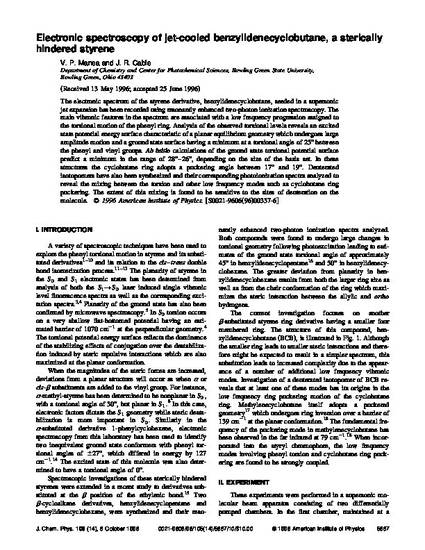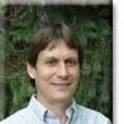
The electronic spectrum of the styrene derivative, benzylidenecyclobutane, seeded in a supersonic jet expansion has been recorded using resonantly enhanced two-photon ionization spectroscopy. The main vibronic features in the spectrum are associated with a low frequency progression assigned to the torsional motion of the phenyl ring. Analysis of the observed torsional levels reveals an excited state potential energy surface characteristic of a planar equilibrium geometry which undergoes large amplitude motion and a ground state surface having a minimum at a torsional angle of 25° between the phenyl and vinyl groups. Ab initio calculations of the ground state torsional potential surface predict a minimum in the range of 28°-26°, depending on the size of the basis set. In these structures the cyclobutane ring adopts a puckering angle between 17° and 19°. Deuterated isotopomers have also been synthesized and their corresponding photoionization spectra analyzed to reveal the mixing between the torsion and other low frequency modes such as cyclobutane ring puckering. The extent of this mixing is found to be sensitive to the sites of deuteration on the molecule. © 1996 American Institute of Physics.
Available at: http://works.bepress.com/john_cable/2/
